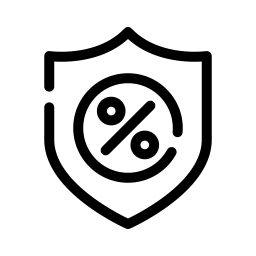If you want your hijabs to stay beautiful and last longer, the safest way is to wash delicate hijabs by hand using mild detergent and lukewarm water, then air dry them flat. This simple method avoids stretching, fading, or ruining the fabric. While it may sound time-consuming, it prevents damage and keeps your hijabs looking fresh for years to come.
Understanding Different Hijab Fabrics
Not all hijabs are made the same, and that means washing methods vary:
-
Silk hijabs – They feel smooth and almost weightless, but silk fibers are fragile. Too much water agitation or strong detergent can damage them. Following fabric care recommendations from the American Cleaning Institute can help prevent early wear.
-
Chiffon hijabs – Popular for their drape. Chiffon snags easily, so rubbing or twisting it during a wash is risky.
-
Satin hijabs – Glossy and elegant, but they tend to lose shine if exposed to harsh soaps.
-
Viscose or georgette hijabs – These are breathable and flowy but can shrink or wrinkle easily.
-
Cotton blends – Easier to wash, though still worth some care to prevent stretching.
It’s surprising how a slight fabric difference can change the whole washing routine. A silk hijab that costs more than your entire grocery run one week shouldn’t go in the same cycle as gym t-shirts. Yet many people throw them all in together, only to complain later that their hijab looks old after two washes. Understanding fabric quality is just as important when buying abayas online
Hand Washing Hijabs: The Safest Bet
Most delicate hijabs respond well to hand washing. It sounds time-consuming, but once you’ve done it a few times, it becomes routine.
Steps to wash delicate hijabs by hand:
-
Fill a clean basin or sink with lukewarm water. Cold water is too harsh for removing light makeup stains, while hot water risks shrinking.
-
Add a few drops of gentle detergent. Baby shampoo works surprisingly well.
-
Place the hijab and move it around lightly. No scrubbing.
-
Leave it to soak for 5–10 minutes.
-
Rinse thoroughly in cool water until the soap is gone.
-
Lay it flat on a towel, roll the towel, and press gently to absorb excess water. Never wrong.
Some fabrics can handle more. A jersey hijab, for example, doesn’t complain much if you rub a stain out. But chiffon will. Simple hijab care tips make it easier to maintain delicate fabrics without overwashing.
Machine Washing Hijabs (If You Must)
Life gets busy. Sometimes, hand washing every hijab isn’t realistic. If you put delicate fabrics in the washing machine, taking precautions helps reduce damage.
-
Use a mesh laundry bag. It stops snags on zippers or buttons from other clothes.
-
Wash on a delicate cycle with cold water.
-
Choose a mild liquid detergent, never a powder. Powders don’t dissolve well and leave residue.
-
Avoid fabric softeners. They can coat the fibers, reducing breathability and shine.
-
Don’t overload the machine. Delicates need space.
Even with care, machine washing shortens the life of delicate hijabs. That’s just the trade-off between convenience and preservation.
Drying Hijabs Without Ruining Them
Drying is where many hijabs lose shape. The heat from a dryer can shrink, stiffen, or dull fabrics.
-
Always air-dry delicate hijabs. Lay them flat on a clean towel or drying rack.
-
Avoid direct sunlight for silk or satin. The sun can fade the colors.
-
If hanging, use padded hangers so the fabric doesn’t stretch.
Ironing comes up here, too. Most hijabs need light ironing or steaming. A silk hijab prefers steaming at a distance. A viscose hijab can take a low iron. Too much heat makes the fabric brittle over time.
Removing Stains Without Stressing the Fabric
Makeup stains, oil, and food spills, real life happens. Removing stains without destroying a hijab requires patience.
-
Dab, don’t rub. Rubbing pushes the stain deeper.
-
Use mild soap or even micellar water on a cotton pad.
-
For oil stains, sprinkle cornstarch or baby powder, leave it for a few hours, then brush off gently.
-
Never bleach a delicate hijab. Even “oxygen bleach” can weaken fibers.
Sometimes a faint stain lingers no matter what. At that point, it may be smarter to style the hijab in a way that hides it instead of risking fabric damage.
Storage Matters More Than People Think
People focus so much on how to wash delicate hijabs that they forget storage matters too.
-
Fold hijabs neatly and store them in drawers with tissue paper between silk or satin ones.
-
Hanging works for cotton or jersey, but delicate fabrics might stretch.
-
Avoid overcrowding. Piling hijabs together creases them, and repeated ironing shortens their lifespan.
A side thought, some people keep lavender sachets or cedar blocks in drawers to keep fabrics fresh. That’s personal preference, but it does help.
Mistakes People Make With Hijab Care
-
Using too much detergent – More soap doesn’t mean cleaner; it just leaves residue.
-
Washing all fabrics together – Treating a silk hijab like a polyester scarf is asking for damage.
-
Ignoring care labels – Brands usually add them for a reason.
-
Ironing on high heat – One wrong press and a satin hijab can burn.
-
Storing hijabs damp – They develop odors quickly.
Some mistakes aren’t catastrophic, but repeated carelessness adds up, especially when dealing with embellished abayas or other delicate garments.
Simple Routine for Busy Weeks
Not everyone has time for long washing rituals. A realistic routine looks like this:
-
Hand-wash the most delicate pieces (silk, satin) once a week.
-
Machine wash sturdier ones (cotton, jersey) in mesh bags.
-
Keep stain removal quick: treat stains immediately instead of waiting.
-
Rotate hijabs so you’re not overusing and overwashing favorites.
It’s less about perfection, more about balance.
Why Care Matters
A hijab is part of daily life. Treating it gently makes it last longer, saves money, and preserves the feeling of wearing something that looks fresh. A frayed hijab still works, but it doesn’t feel the same when you put it on. Some people don’t mind; others do. That’s personal. But if you want your hijabs to stay elegant, washing and storing them the right way is part of the effort.
Final Thoughts
Learning how to wash delicate hijabs is not complicated once you figure out the basics. The main idea: be gentle. Don’t rush. Respect the fabric type. Some hijabs are everyday warriors that can survive a rough wash. Others demand slow care. Not every tip applies to every hijab, and sometimes you’ll bend the rules. That’s fine. What matters is avoiding the habits that damage the fabric and making space in your routine for small adjustments.
The care you give your hijab reflects the value it holds for you. If it’s a simple cotton one, toss it in the wash without guilt. If it’s silk that you save for special occasions, treat it like it deserves. Either way, your hijabs last longer, look better, and continue to be part of your everyday expression.
FAQs
1. Can I wash delicate hijabs in a washing machine?
Yes, but it’s risky. Always place them in a mesh laundry bag, use a delicate cycle with cold water, and avoid overloading. Hand washing is safer.
2. How often should I wash delicate hijabs?
It depends on use. Everyday hijabs may need washing after 2–3 wears, while silk or satin hijabs can be washed less often if you store them properly and keep them fresh.
3. What is the best detergent to wash delicate hijabs?
A mild liquid detergent or even baby shampoo works well. Avoid powders and fabric softeners, as they can damage delicate fibers.
4. Can I iron delicate hijabs?
Yes, but use the lowest heat setting or a steamer. For silk hijabs, steaming at a safe distance is best to prevent fabric damage.
5. How do I remove makeup stains from hijabs?
Use a cotton pad with micellar water or a small amount of mild soap. Dab gently without rubbing to lift the stain without harming the fabric.












